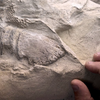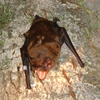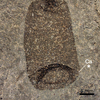See Meteors in the night sky tonight!

Above: Composite image of the Geminid shower at its peak in 2014. NASA/MSFC/Danielle Moser, NASA's Meteoroid Environment Office
Post Author - Ellis Nolan
One of the most anticipated events of the year for stargazers, the Geminid meteor shower is an awe-inspiring site. At its peak, about 2:00 AM, over 100 yellow-tinged Geminid meteors, Geminids, streak across the sky per hour (under ideal conditions). However, meteors are usually visible as early as 9:00 PM, and continue until dawn. Here are some of our favorite facts about the Geminids!
Part of what make the Geminids so popular is their predictability. Since they usually peak in early December, viewers can plan on being in an ideal viewing environment to see the shower. Even so, they didn’t always have the intensity they do today. First observed in 1862, there were only about 10 to 20 meteors per hour, far cry from today’s approximately 120. The Geminids have been said to multiply in meteors per hour each year, so perhaps even more will be seen in the future!
While they are quite regular in their occurrence, the Geminids differ from all but one other meteor shower in their origin. Most meteor showers are, as one researcher put it, “comet poop”: debris from the “tail” of a comet that burns up in great streaks of light as it enters Earth’s atmosphere. In contrast, Geminid meteors are debris from an asteroid, specifically the asteroid 3200 Phaethon. First discovered in 1983, it is quite the asteroid over-achiever. Not only is it the first asteroid discovered via images taken by a spacecraft (specifically the Infrared Astronomical Satellite), its orbit brings it closer to the Sun than any other named asteroid.
Meteor showers are generally named after their “radiant” or where the meteors appear to originate from. The Geminids are no different, with their radiant being the constellation of Gemini, best seen in Winter months in the Northern hemisphere. To find Gemini, look for Orion’s belt, then look to Rigel, the right foot of the Orion constellation. After locating Rigel, follow the line from Rigel to Betelgeuse, Orion’s left shoulder, and you will find Castor and Pollux, the two brightest stars of the Gemini formation!
While the Gemini formation is a great place to start looking for the Geminid meteors, it is by no means the only place you’ll see them. During its peak, you can see Geminids in all parts of the night sky where there’s no light pollution or obstructions. A great strategy is to go with a group; Each person can keep track of a particular quadrant of the night sky and call out to the others if they see a meteor! Make sure to bundle up and happy Geminid hunting!
Featured Product
Joe Frazier Boxing Glove
Cool Things!

Is “Paul is Dead” Dead?: Unpacking One Of Pop Culture’s Most Enduring Conspiracy Theories

Scientists Discover Hooves and Skin in Preserved Dinosaur "Mummies!"
A dinosaur discovery just in time for Halloween! In a new analysis of a group of fossils from Wyoming, Scientists have determined this group of fossils are dinosaur “mummies,” with preserved skin and even hooves.

Scientists Record a Bat Catching Birds Mid-Flight!
Bats, birds, screeches, oh my! In a reverse-Hitchcock twist, a new study reveals that a species of European bat catches and eats birds mid-flight.
Specimen Deep Dives

The House that Ruth Built: The Story of the Old Yankee Stadium

The Queen of the Skies: the Story of the Boeing 747

Old Ironsides: The USS Constitution and the Start of the U.S. Navy
Long Form Articles

The Artist Behind the Macintosh: Susan Kare and Apple Computers
While the two Steves, Jobs and Wozniak, are the most well known faces behind Apple computers, equally important to the products and culture of the company were those who crafted the experience of using their computers through design. The most notable of these visual architects was Susan Kare, a designer responsible for “humanizing” Macintosh computers.

Can I Lick It? Yes You Can!
Have you ever been unable to tell if a fossil was really a fossil, but you were too embarrassed to admit it? Have you ever wanted to lick a fossil just because, but you didn’t want to risk judgment from your peers? Well, good news! You can kill two birds with one stone! Licking a fossil can actually help you determine if it’s the real deal or just another rock.

Is It Legal To Own a Meteorite: How to Start Your Outer Space Collection!
Meteorites are some of the rarest geological specimens to be found on Earth. Of course, since these stones are not of our world, purchasing them can sometimes be a confusing process. Is it legal to own a meteorite? In short, yes! Read on for help starting your cosmic collection!


















